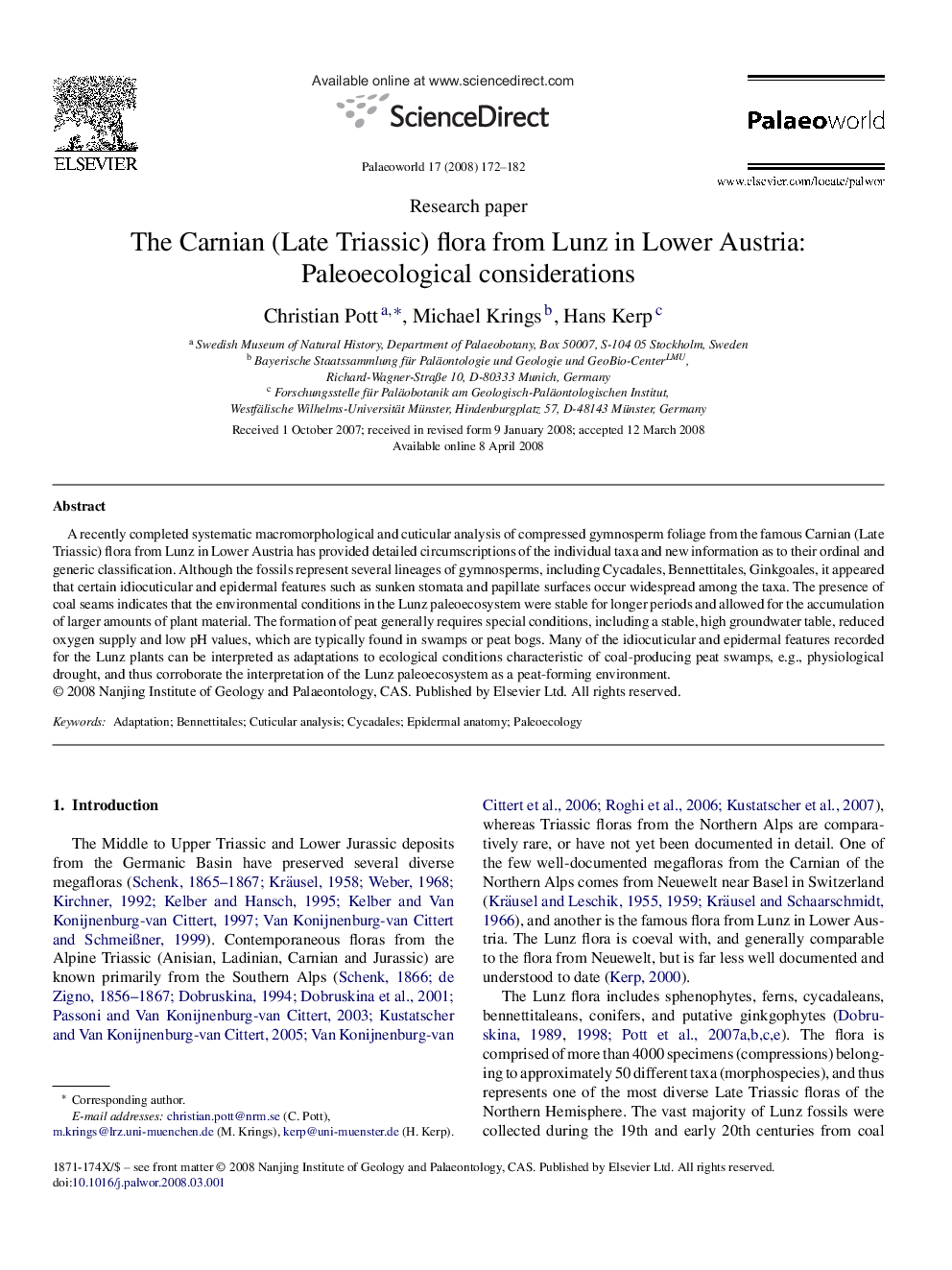| Article ID | Journal | Published Year | Pages | File Type |
|---|---|---|---|---|
| 4749953 | Palaeoworld | 2008 | 11 Pages |
Abstract
A recently completed systematic macromorphological and cuticular analysis of compressed gymnosperm foliage from the famous Carnian (Late Triassic) flora from Lunz in Lower Austria has provided detailed circumscriptions of the individual taxa and new information as to their ordinal and generic classification. Although the fossils represent several lineages of gymnosperms, including Cycadales, Bennettitales, Ginkgoales, it appeared that certain idiocuticular and epidermal features such as sunken stomata and papillate surfaces occur widespread among the taxa. The presence of coal seams indicates that the environmental conditions in the Lunz paleoecosystem were stable for longer periods and allowed for the accumulation of larger amounts of plant material. The formation of peat generally requires special conditions, including a stable, high groundwater table, reduced oxygen supply and low pH values, which are typically found in swamps or peat bogs. Many of the idiocuticular and epidermal features recorded for the Lunz plants can be interpreted as adaptations to ecological conditions characteristic of coal-producing peat swamps, e.g., physiological drought, and thus corroborate the interpretation of the Lunz paleoecosystem as a peat-forming environment.
Related Topics
Physical Sciences and Engineering
Earth and Planetary Sciences
Palaeontology
Authors
Christian Pott, Michael Krings, Hans Kerp,
